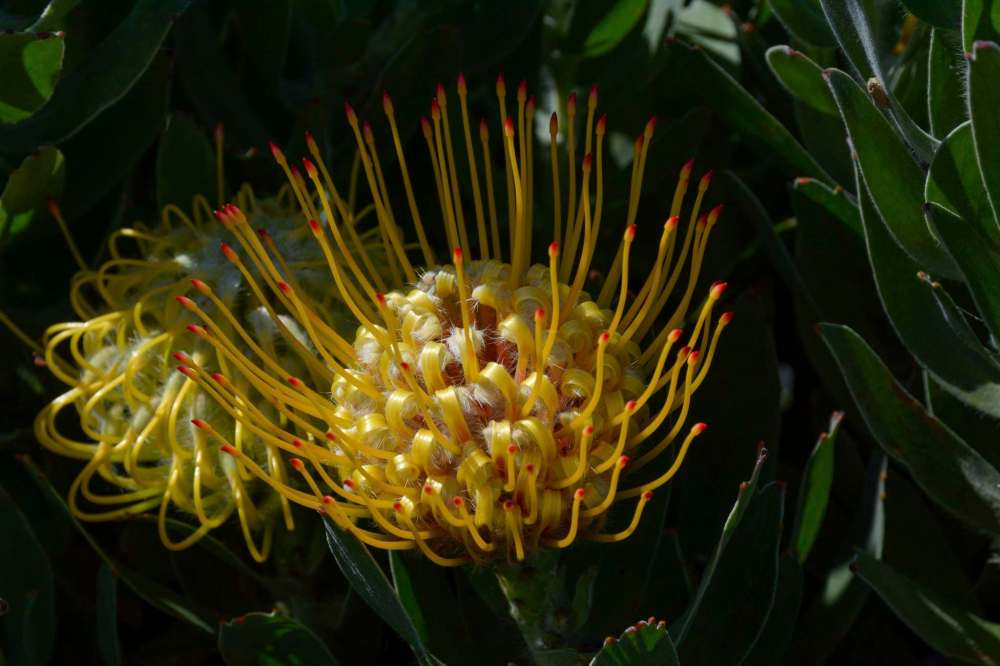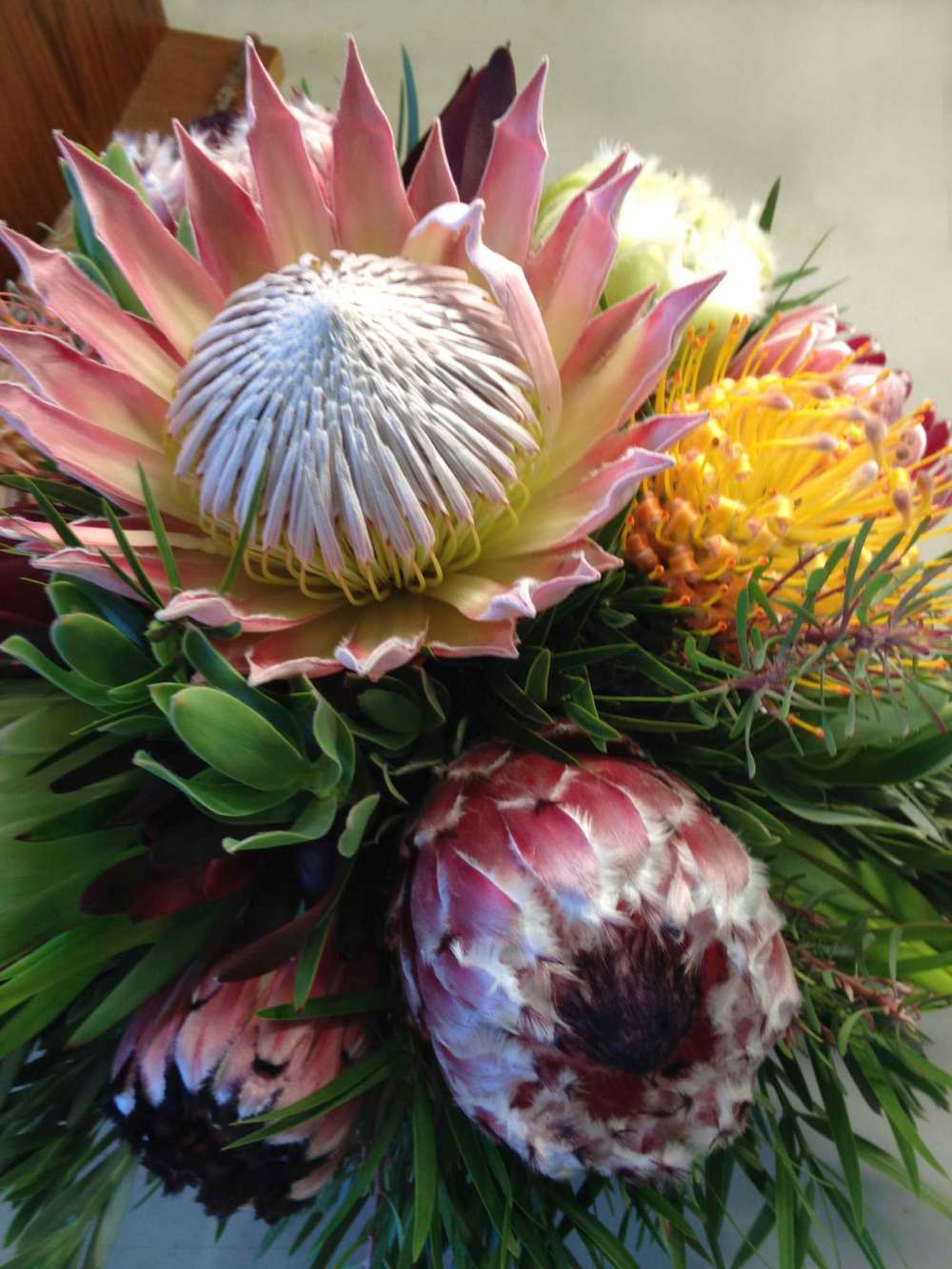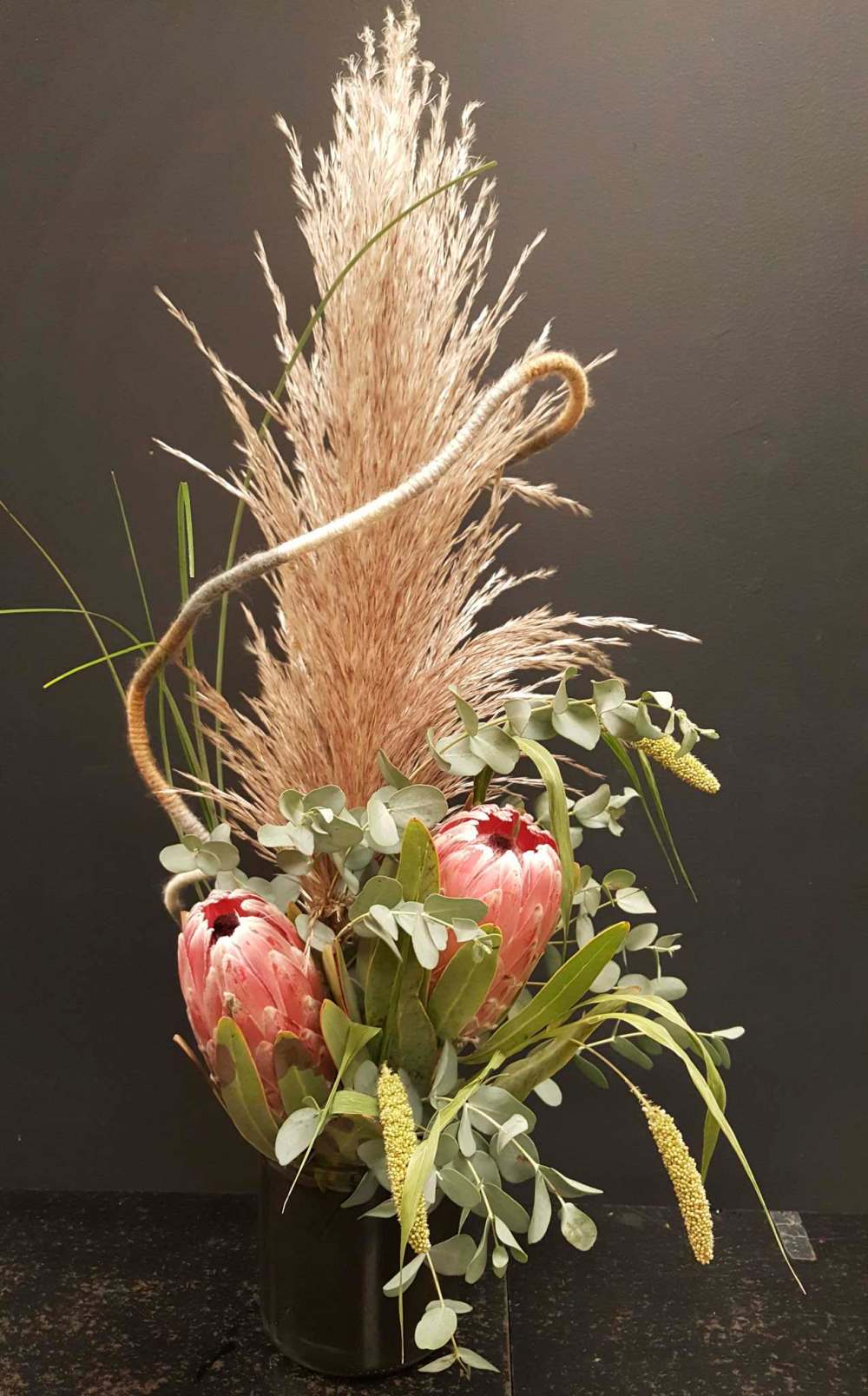Protea blooming in popularity
Researchers, breeders in Hawaii exploring design trends with exotic cut flowers
Advertisement
Read this article for free:
or
Already have an account? Log in here »
To continue reading, please subscribe:
Monthly Digital Subscription
$0 for the first 4 weeks*
- Enjoy unlimited reading on winnipegfreepress.com
- Read the E-Edition, our digital replica newspaper
- Access News Break, our award-winning app
- Play interactive puzzles
*No charge for 4 weeks then price increases to the regular rate of $19.00 plus GST every four weeks. Offer available to new and qualified returning subscribers only. Cancel any time.
Monthly Digital Subscription
$4.75/week*
- Enjoy unlimited reading on winnipegfreepress.com
- Read the E-Edition, our digital replica newspaper
- Access News Break, our award-winning app
- Play interactive puzzles
*Billed as $19 plus GST every four weeks. Cancel any time.
To continue reading, please subscribe:
Add Free Press access to your Brandon Sun subscription for only an additional
$1 for the first 4 weeks*
*Your next subscription payment will increase by $1.00 and you will be charged $16.99 plus GST for four weeks. After four weeks, your payment will increase to $23.99 plus GST every four weeks.
Read unlimited articles for free today:
or
Already have an account? Log in here »
Hey there, time traveller!
This article was published 28/12/2019 (2173 days ago), so information in it may no longer be current.
Quick, where does protea grow? If you answered the Western Cape of South Africa, you wouldn’t be wrong.
The King protea is the national flower of South Africa. Plants in the protea family also occur in the cool, dry areas of Australia, New Zealand and South America. If your fresh holiday arrangement includes exotic cut protea flowers purchased at a local florist shop, chances are they came from a family-run protea farm in Hawaii, where the flower has been introduced and many new varieties are being hybridized by breeders at the University of Hawaii.
Chances are, too, that the presence of a protea in your flower arrangement evokes superlatives from your guests, while some look at these mysterious flowers and wonder, what is that?

With more than 1,500 species of protea — many of which differ vastly from one another in form, size, colour and texture — one might think we’d be more familiar with these bejewelled beauties in this part of the world, but we’re still becoming familiar with them.
There’s a reason why protea has such prehistoric good looks. It comes from one of the oldest and most diverse plant families in the world, Proteaceae, which originated 300 million years ago. (Interestingly, the macadamia nut belongs to the same family.)
The popularity of protea as a cut flower is steadily rising, but especially in the past three years, says Brandi Elloquence, manager at the Floral Fixx in Winnipeg.
King and queen proteas (cynaroides), with their wildly unusual, big statement blooms, are the two most expensive varieties, she says, with a cost upwards of $50 per stem. Leucospermum hybrids (commonly called pincushion) are no less exotic with their intricate, concentric petal pattern, albeit daintier in size and more affordable at around $16 per stem.
Elloquence says most customers gravitate towards the Banksia hybrids, which are distinguished by their unique spike-shaped flowers that come in a range of vibrant colours. There is also the luxuriant Nerifolia selection known as Brenda Pink Mink with its topmost bracts of pink uniquely edged in black fur. Brides love blushing bride Serruria rosea protea, which has unique pointed petals in light pink and cream. There are many more types of protea, of course, but all have an unsurpassed architectural quality to their blooms.
In Hawaii, the genus protea and its many species thrive in the well-drained acidic, volcanic soil in upcountry Maui on the western slope of Haleakala volcano. The elevation, combined with the warm days and cool nights, provides excellent growing conditions.

There you will find Malolo Farm, which grows many protea varieties from the University of Hawaii’s hybridization program. This December, owner Ali Minney sold out her stock of cut protea flowers. There will be more to come, as the growing season for proteas ranges from fall to spring. Minney is one of the very few successful propagators of protea in the state of Hawaii.
The Hawaii tropical flower and plant guide, NeoTropica, states that collectors were probably responsible for introducing proteas to the Hawaiian Islands. Philip Parvin is known as the father of the protea industry in Hawaii for his research over a 25-year period as a horticulturist at the College of Tropical Agriculture and Human Resources (CTAHR), University of Hawaii. Today, Teresita Amore, assistant researcher, department of tropical plant and soil sciences at CTAHR, continues the work of Parvin with the goal to develop new hybrids with ideal horticultural characteristics.
“The way we view ornamental breeding in Hawaii has shifted, in the sense that breeders and researchers now work just as closely with floral designers as growers,” Amore says.
This integrated approach is very good for the floriculture industry in Hawaii as a whole, she says. Green Point Nurseries, for example — a major cut flower wholesaler that ships exotic proteas and tropical flowers direct from Hawaii to anywhere in Canada — works closely with CTAHR and hosts floral design workshops that give researchers a chance to try their hand at arranging flowers. This allows a better feel for design trends, Amore says, and leads to improved breeding.
Poppy Parsons is a floral designer who owns Smart Flowers in Swift Current, Sask. In August, she was part of a group of Canadian florists invited by the Hawaii Floriculture and Nursery Association to come to Hawaii and explore flower farms and nurseries for the purpose of expanding Hawaiian-grown flowers into Canada. I met Parsons at Malolo Farm in Maui. My group included Edwin Pritchard, who was representing the Floral Fixx, as well as Gloria Sawatzky, co-owner of Beyond Flowers.

“Proteas ship really well from Hawaii to Saskatchewan,” Parsons says. That’s hugely significant, since no major carriers at present provide scheduled passenger service into Swift Current Airport.
While local florists in Winnipeg have access to a major airport, Parsons is three hours away from the nearest airport, which results in an extra day of shipping.
With a growing population of about 16,000 people, Smart Flowers also serves a large clientele in the surrounding farming, ranching and oilfield communities.
Parsons loves the floral pairings created by Malolo Farm that combine proteas with zinnias, sunflowers and coneflowers. Parsons specializes in her own wild prairie creations that have a fresh, hand-picked look.
In one example of a wild prairie design, Parsons used a stunning pampas grass plume and eucalyptus to give a feeling of wheat blowing in a field. She added two Brenda pink proteas at the base of the design. A support system called a midollino extender wrapped in yarn draws the eye upward to the pampas grass.

Parsons likes to experiment with design armature, a mechanic for supporting flowers in a floral arrangement.
In one very unique design, she used Mason jar sealer rings to create an armature, which she then placed on top of a vintage brass vessel.
The two feature flowers in this case were Protea grandiceps, which she combined with peach roses and carnations for a tropical nouveau design. “To further compliment the wild flower look blended with everyday blooms,” Parsons says, “I added Chocolate Lace Dara daucus flower (a burgundy-chocolate-coloured Queen Anne’s Lace), Nandina greens and berry pods, and some pheasant tail feathers.”
Proteas are long-lived cut flowers — seven to 14 days or longer depending on the variety. Don’t throw out your protea cut flowers with the vase water. Dried proteas will last for years. Simply hang your proteas up to dry in a cool, dark room.
For one client, Parsons designed a fresh table garland centrepiece with pincushion proteas in water tubes for Thanksgiving. She tossed out the spent flowers, but kept the proteas, dried them and then created a new centrepiece for her client for Christmas using the dried protea together with fresh flowers and mixed tropical greens.

Simply wild about protea flowers? Malolo Farm has designed a handmade, Hawaiian-style snowman live-forever dried protea wreath. You could try this, too. Dry your protea flowers prior to assembly. The Malolo Farm website says the dried protea flowers will hold their shape for many seasons to come.
colleenizacharias@gmail.com

Colleen Zacharias
Gardening columnist
Colleen Zacharias writes about many aspects of gardening including trends, plant recommendations, and how-to information that is uniquely relevant to Prairie gardeners. She has written a column for the Free Press since 2010 and pens the monthly newsletter Winnipeg Gardener. Read more about Colleen.
Every piece of reporting Colleen produces is reviewed by an editing team before it is posted online or published in print — part of the Free Press‘s tradition, since 1872, of producing reliable independent journalism. Read more about Free Press’s history and mandate, and learn how our newsroom operates.
Our newsroom depends on a growing audience of readers to power our journalism. If you are not a paid reader, please consider becoming a subscriber.
Our newsroom depends on its audience of readers to power our journalism. Thank you for your support.

